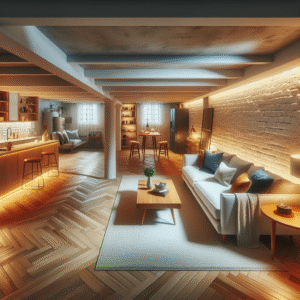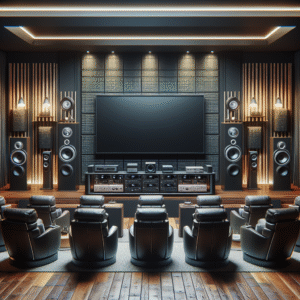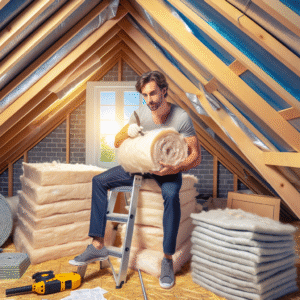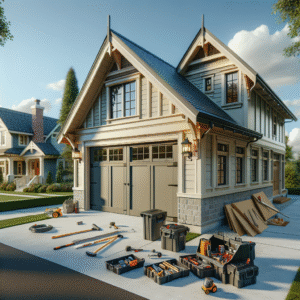Energy-efficient windows are a smart investment that can significantly reduce your home’s heating and cooling costs while improving overall comfort. If your current windows are old, drafty, or single-paned, upgrading to energy-efficient windows can make a noticeable difference. In this guide, we’ll explore how to maximize energy efficiency in your home with new windows, from selecting the right materials to proper installation and maintenance.
1. Choose the Right Window Type
The type of window you choose has a significant impact on your home’s energy efficiency. Here are some of the most common types of energy-efficient windows:
- Double-Paned Windows: Double-paned windows have two layers of glass with a space in between that acts as an insulating barrier. This helps reduce heat transfer, keeping your home warmer in the winter and cooler in the summer.
- Triple-Paned Windows: Triple-paned windows take energy efficiency a step further with an additional layer of glass. These windows are ideal for colder climates where preventing heat loss is critical.
- Low-E Glass: Low-emissivity (Low-E) glass has a special coating that reflects heat back into your home, improving insulation without compromising natural light.
- Gas-Filled Windows: In some energy-efficient windows, the space between the panes is filled with gases like argon or krypton, which provide better insulation than air.
When choosing windows, consider the climate in your area and the specific energy goals you want to achieve. Double-paned windows are often sufficient in moderate climates, while triple-paned or Low-E windows may be necessary in more extreme conditions.
2. Select Energy-Efficient Frames
The material used for window frames also plays a role in energy efficiency. Certain materials provide better insulation and durability than others. Here are some popular options:
- Vinyl Frames: Vinyl is a cost-effective option that provides good insulation. These frames are low-maintenance and resistant to moisture and UV damage.
- Wood Frames: Wood offers excellent insulation but requires regular maintenance to prevent rot and warping. Wood-clad frames (wood on the interior and a weather-resistant material on the exterior) are a popular compromise.
- Fiberglass Frames: Fiberglass frames are highly energy-efficient and durable. They expand and contract at the same rate as glass, which reduces the likelihood of air leaks.
- Aluminum Frames: While aluminum is lightweight and durable, it is less energy-efficient due to its high thermal conductivity. However, aluminum frames with thermal breaks can improve energy efficiency.
Choosing the right frame material for your new windows can significantly enhance energy performance and reduce drafts and heat loss.
3. Focus on Proper Installation
Even the most energy-efficient windows won’t perform well if they’re improperly installed. Poor installation can lead to air leaks, drafts, and moisture infiltration, which diminish the benefits of your new windows. To ensure your windows are installed correctly:
- Hire a professional: Always work with a certified window installer to guarantee proper installation. A professional installer will ensure that windows are airtight and properly sealed.
- Check for gaps: After installation, check for any gaps or drafts around the windows. Caulking and weatherstripping can help seal small openings, but larger gaps may require further adjustment.
Proper installation is key to maximizing the energy efficiency of your new windows and ensuring long-term performance.
4. Use Window Treatments for Added Insulation
Window treatments such as blinds, shades, and curtains can add an extra layer of insulation to your windows, further improving energy efficiency. Here’s how different treatments can help:
- Thermal curtains: These curtains are made from thick, insulating fabrics that help block drafts and prevent heat loss during the winter.
- Cellular shades: Also known as honeycomb shades, these window treatments trap air in their cellular compartments, providing extra insulation.
- Reflective blinds: Blinds with reflective surfaces can help reduce heat gain in the summer by reflecting sunlight away from your home.
By using energy-efficient window treatments in combination with your new windows, you can enhance their performance and further reduce your heating and cooling costs.
5. Maintain Your Windows Regularly
Once your new energy-efficient windows are installed, regular maintenance is essential for ensuring they continue to perform optimally. Here are some maintenance tips to keep your windows in top shape:
- Clean the glass: Regularly clean your windows to remove dirt and grime that can block sunlight and reduce the effectiveness of Low-E coatings.
- Check for drafts: Periodically check for drafts or air leaks around the window frames, especially during extreme weather conditions. If you notice any issues, reseal the windows to maintain efficiency.
- Inspect hardware: Ensure that the window locks and seals are functioning properly to prevent air infiltration. If any parts are damaged or worn, replace them promptly.
Maintaining your windows helps prolong their lifespan and ensures that they continue to provide energy-saving benefits year after year.
FAQ
1. How much can energy-efficient windows reduce my energy bills?
Energy-efficient windows can reduce heating and cooling costs by 10-25%, depending on your climate, the condition of your old windows, and the type of new windows installed.
2. What is Low-E glass, and why is it important?
Low-E (Low-Emissivity) glass is coated with a thin, transparent layer that reflects heat back into your home while allowing natural light to pass through. It improves energy efficiency by reducing heat loss in winter and heat gain in summer.
3. Are triple-paned windows worth the extra cost?
Triple-paned windows provide better insulation than double-paned windows, making them a great option for homes in extreme climates. However, the cost may not be justified in milder climates where double-paned windows offer sufficient energy savings.
4. How long do energy-efficient windows last?
With proper maintenance, energy-efficient windows can last 20-30 years or more, depending on the material and the quality of the installation.
5. Can I install energy-efficient windows myself?
While DIY installation is possible, professional installation is highly recommended to ensure proper sealing, insulation, and performance.
Conclusion
Installing energy-efficient windows is a smart way to improve your home’s comfort, reduce energy costs, and boost overall efficiency. By choosing the right window type, materials, and ensuring proper installation, you can maximize the benefits of your new windows. With regular maintenance and the use of window treatments, your home will stay energy-efficient for years to come.








